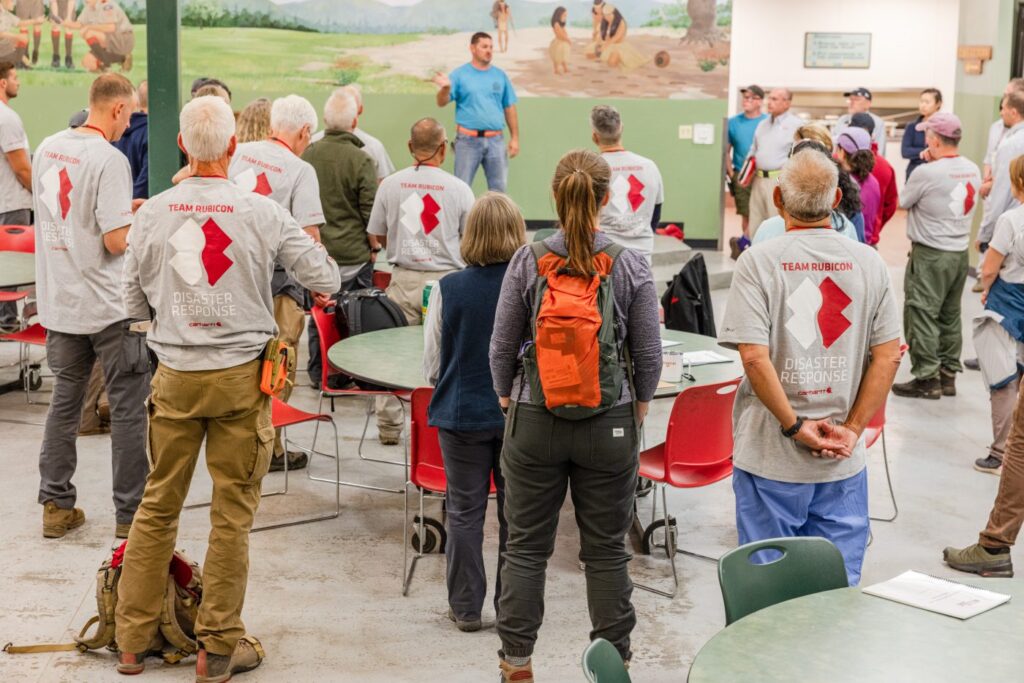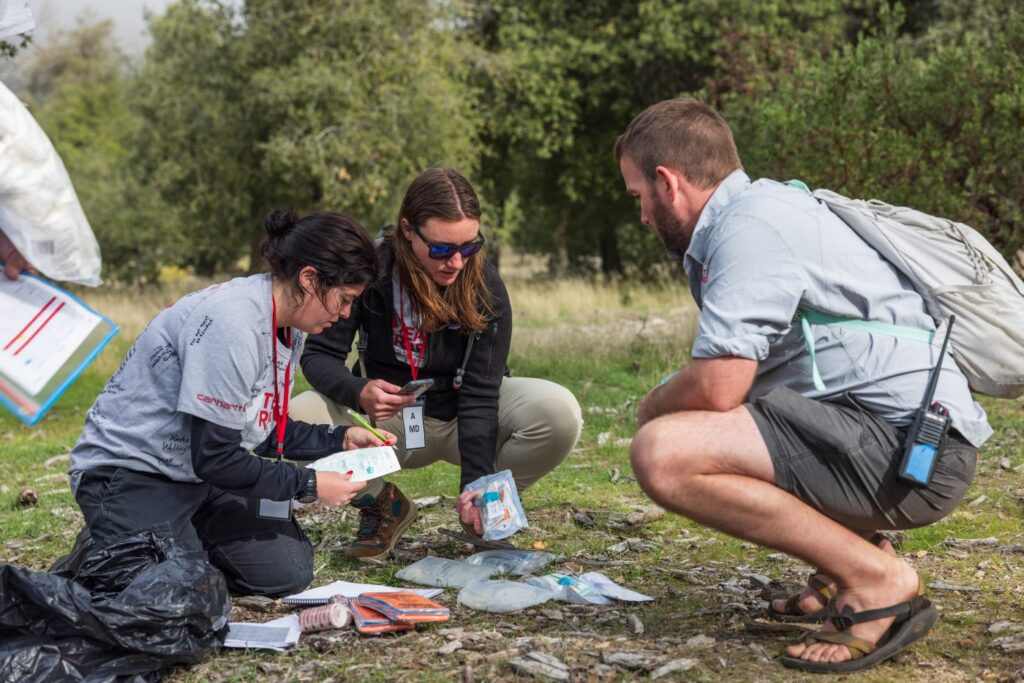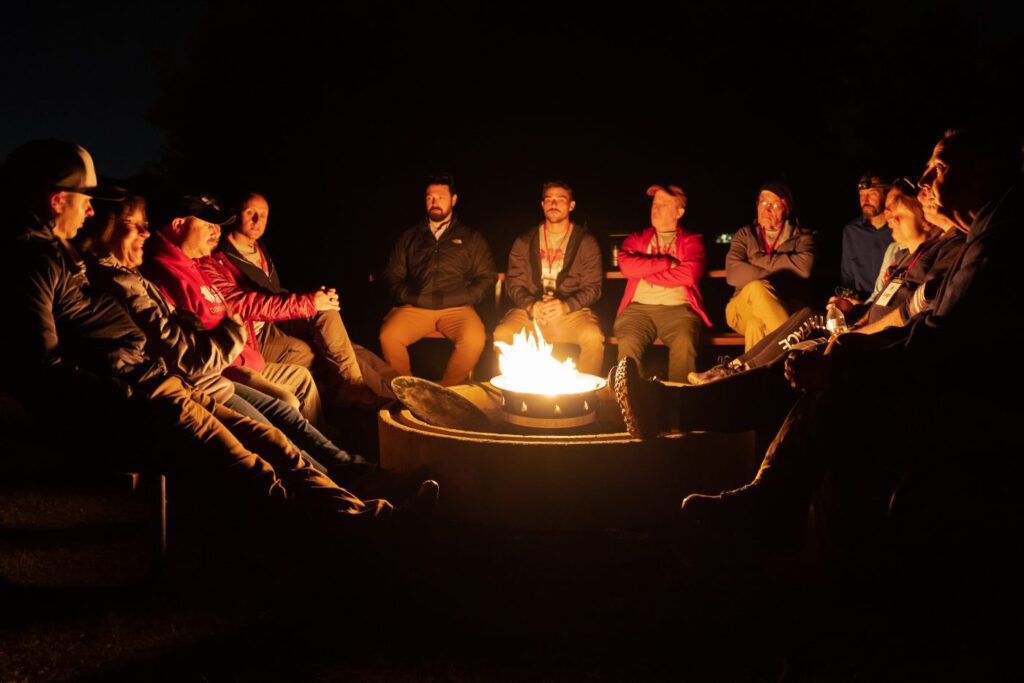On a bright but chilly Sunday in October, 24 men and women arrived at Team Rubicon’s headquarters in Los Angeles from all points of the compass, ready to head into the mountains for what we knew would be five days of high-stress testing of our abilities.
The exact disaster recovery simulation we’d be participating in was a mystery to all of us, outside of snippets of information we’d gleaned from online workshops we‘d attended in the weeks prior. What we did know was that throughout Team Rubicon’s five-day International Training and Selection Course—or ITSC—we’d be graded continually and, at the end of it all, we’d either make the roster to be called up to volunteer on international disaster relief and humanitarian aid operations, or not. Of course, those of us who didn’t make the grade would still be able to volunteer domestically with Team Rubicon.
International Training That Tests for Disaster and Diplomacy Skills
A five-day course held in a remote location and chock full of disaster simulations, ITSC is the culmination of Team Rubicon’s international volunteer application process. It’s designed to train applicants—each selected for their natural leadership abilities and diverse life experiences—in the specific skills they will need to lead disaster response, humanitarian aid, and medical operations in locations around the world. Medical expertise and logistical talents are just a part of the abilities Team Rubicon is looking for in the ITSC participants; diplomacy, patience, and a well-developed sense of humor are just as vital to the success of international field operations.

As with domestic disaster responses, those serving with Team Rubicon on international humanitarian aid missions are volunteers: Each mission comes with a free flight to a disaster zone, modest meals, and a place to drop a sleeping bag. Still, thousands of individuals believe in the value of offering help wherever it is needed in the world and, twice a year, Team Rubicon culls hundreds of applicants down to 24 to 26 and invites them to take the International Training and Selection Course. Those who pass ITSC become the volunteers who may be put in often austere situations anywhere in the world. In some cases, that might mean providing humanitarian aid in a conflict zone; in others, it could be providing medical relief after an earthquake in a developing nation where the volunteer might not be fluent in the language.
Over the course of these five days of ITSC, each of us would rotate through all the functions that, taken together, make for a complete Emergency Medical Team Type 1 Mobile, as designated by the World Health Organization, as well as roles in logistics, comms, and water, sanitation, and hygiene, or WASH. It’s these EMT-1s that, increasingly, Team Rubicon is putting into the field around the world, including most recently in Ukraine.
Five Days of Lots of Disasters and Little Intel
At Team Rubicon’s headquarters, we were divided into two teams, Team Alpha and Team Bravo. After a brief introduction, we were directed to a massive pile of medical and disaster recovery equipment and were instructed to sort through all that gear and then load what we thought we might need into provided cars.
Then, navigation and convoy skills were required as we had to find our own route to a wilderness camp set among 1,400 acres of oak, pine, and chaparral and bordered by the Cleveland National Forest and the Anza-Borrego Desert State Park in Lost Valley, CA. The roads were unpaved, and it was a long, bumpy ride uphill on a dirt single-track to get there. We camped two to a tent that week, transiting between courses on the skills we would need in the field and intense daily simulations of responses to a variety of crises and disasters.

Each day we worked through two, sometimes three, simulations. Relying on recollections from online courses we’d attended and occasional hints given by Team Rubicon mentors, we scrambled to assemble the correct medical and water treatment equipment for the given task—be it to set up a small field hospital, supply a village with clean water, or treat a host of injured and ill patients. Then, we scrambled to navigate in convoy to the simulation’s designated location and properly set up that field equipment and treat the “patients” and help “villagers” who were being portrayed by actors, Team Rubicon employees, and volunteers.
We were shadowed constantly by experienced Team Rubicon staff and volunteer leadership who silently graded and evaluated each of us for leadership qualities, our ability to maintain tension-free interactions with fellow team members, and how well we adapted and improvised under the stress of not knowing whether we were making the correct decisions. The silent observers, and the knowledge that the course was a selection process and that we might not pass, set everyone’s nerves on edge.
By the second full day, it was already crystal clear that, in order to pass ITSC, we were going to have to adapt to ambiguity. We were continuously tossed into situations where we had, intentionally, been given precious little information about what we were supposed to do and even less instruction on how we were supposed to do it. Effective improvisation under fire was one of the key skills Team Rubicon wanted to see the ITSC participants demonstrate.
In one simulation, we were tasked with providing aid to multiple rural Mexican villages that had suffered serious earthquake damage. Before we could even set up a mobile field clinic to treat light injuries and triage those with serious injuries who would need to be transferred to a local rural hospital with full surgical care, we had to locate a water source, use filtering equipment to create enough clean water to provide for drinking and medical needs, and set up portable latrines for patients and staff.

We were still setting up the field medical clinic when a flood of “patients” began to stream in from the nearby village. As our medical staff began to triage their various illnesses and injuries and treat them, Team Rubicon organizers tossed another wrench in the works: A villager walked into the clinic claiming a new trauma and demanding help for another person trapped nearby.
This engendered a hurried discussion with my ITSC colleagues and raised a number of questions that would be very urgent concerns in a real-world situation: Did we have personnel with the medical expertise needed to treat the traumatic injuries being claimed? If we sent those team members to the scene, would we have enough experienced medical personnel left at the clinic to treat the long line of patients already waiting? And, critically, what were the security concerns of sending a very small team to the remote accident site in an already conflict-rich environment? What if the villager was planning to rob them?
In the end, we collectively decided that we had a moral obligation to help if we could. We sent a small cohort of the medical team who were most experienced in dealing with traumatic injuries, and we “saved” the injured woman’s life with initial first aid given and with the help of an emergency helicopter extraction that transported her to a regional hospital. The helicopter that landed in a nearby field wasn’t a simulation; a local emergency medical helicopter crew had been happy to support Team Rubicon’s training efforts.
Another simulation involved convincing a village chief to allow us to visit their village in hopes of improving the quality of its drinking water. After employing cultural sensitivity and partaking in some friendly negotiations, we convinced some dubious village women to move their livestock to fields farther from the river and to bathe downstream from where they dipped for drinking water.
Those were just some of the many challenges we faced that week, each of which was designed to test not only our mettle but also our ability to react appropriately in many different situations.
Bonded in Brotherhood and the Call to Serve
When I first heard about Team Rubicon’s international operations and its call for volunteers, I tried to imagine the others who would heed the call. I had expected there would be some U.S. veterans who wanted to continue to serve and put to further use medical and organizational skills earned in the military. I also expected to find some people mired in unfulfilling careers who were looking to make life changes and maybe do some good in the world. What I actually found was a group of people defined by strong character and, in many cases, elite skill sets.

My week at ITSC was intense, but it was made deeply satisfying for the chance to spend it with an incredibly high caliber of people, and for the opportunity to become part of a group that is all too rare in this world: a brotherhood of women and men bonded by the desire to serve people anywhere in the world, no matter what kind of distress they were in, and hopefully cure some ills and bring a little light and hope along the way.
A week after I was back home from those dry, chaparral-covered mountains, I got the call: I had passed.



